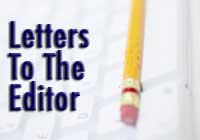To The Editor,
 It has been reported that the Unionville Chadds Ford School District operates its four K-5 elementary facilities with average class sizes of 13.1 to 14.1 students. Similarly the UCF High School operates with average class sizes of 15.1 students. Unfortunately, I do not have data for Patton Middle School, but suspect these students experience similar class sizes.
It has been reported that the Unionville Chadds Ford School District operates its four K-5 elementary facilities with average class sizes of 13.1 to 14.1 students. Similarly the UCF High School operates with average class sizes of 15.1 students. Unfortunately, I do not have data for Patton Middle School, but suspect these students experience similar class sizes.
The UCF class sizes are typical for private schools and not for public schools. The UCF’s policy manual calls for K-3 class sizes to average 20 – 22 students and 4-12 grades to experience 25 – 27 students per class. To maintain these extremely small class sizes the district must employ many, many more teachers than necessary.
I suspect this practice has been happening for over a decade. I suspect this was the purpose of Keith Knauss right to know efforts and lawsuits before he was elected to the school board. Unfortunately since being elected he has taken no efforts to correct this costly problem.
I estimate that maintaining these small class sizes cost our district this year over $8 million and typically has increased annual budgets (and thus property tax rates) by at least 10% annually. This practice must end immediately. Our taxpayers should be expected to support a public school that follows its established practices. The taxpayers must not be forced to support a private school because the UCF Board and Administration fails to follow their established policies.
I expect to see major corrective actions to be taken in the 2013-14 budget. I also expect this matter will be seriously addressed in the current discussions on a new teachers’ contract.
Bruce Yelton
Pocopson







I currently live in Virginia, and am planning to relocate to the UCFSD in the summer solely based on the outstanding public school system. I will bring my (and my husband’s) taxes to the district and will gladly support the system well after my girls graduate. Your district has lessons to teach the rest of the country about education; cutting the very thing you are doing right is absurd. I hope your school board knows they are doing a great job!
Demographics, property values, taxes, and the success of UCSFD schools are intertwined. While I lack supporting empirical evidence, I nonetheless believe it a logical hypothesis that many UCSFD taxpayers share my willingness to pay higher taxes for more (and better) teachers and smaller class sizes. We have an inordinantly wealthy and well-educated adult population in this district. We believe top-notch public schools are good economic policy. Outstanding public schools lead to higher property values. Higher property values lead to high-income home-buyers. High-income home-buyers are highly educated adults. Highly educated adults demand high education standards for their children. When the demanded high standards are met we have outstanding public schools and successful kids, which makes our property values even higher. In short, I (and I suspect many of my neighbors) believe the expense of smaller class sizes and great teachers in UCSFD schools are a worthwhile investment. It’s an actively managed investment–we give our time and we stay involved with our kids and their teachers. If UCSFD ever fails to meet our standards, rest assured we will engage. We didn’t become wealthy by leaving success to chance.
If Mr. Yelton does not agree with the tax expense of smaller classes and blue-chip teachers as a necessary ingredient of a great public school district, I will gladly sell him my house in Georgia. This house and property would fit the mold of any neighborhood in East Marlboro Township, but the taxes are about 1/5th, and the market value about 1/4th, of what they are here. The public school class sizes are about 50% larger, teachers’ salaries are 50% smaller, and the college-bound rate of the high school graduates is less than 50%. If we had stayed there we would have paid $15,000/year for each of our three kids to go to a private school (that’s not quite as good as UHS). The higher taxes and higher mortgage payment we pay to have our kids in UCSFD schools add up to a lower overall cost and better long-term investment, never mind the intangible value to our children.
Mr. Yelton: what is the source of your information that elementary class sizes within the district average 13.1 to 14.1 students per clas? I have four children presently enrolled in UCFSD elementary schools and their class sizes are all higher then the highest number in the range you are citing. Are you including class sizes from specialized classrooms such as special education classrooms in the average? Because that is not comparing “apples to apples.”
It would be appropriate for Mr. Yelton to contact a board member or an administrator before publishing misleading information and coming to the absurd conclusion that “maintaining these small class sizes cost our district this year over $8 million”.
.
A quick review of the Directory for Hillendale would show class sizes in 1st grade of 20, 2nd grade of 18, 3rd grade of 21, 4th grade of 23 and 5th grade of 20. I suspect Mr. Yelton has taken the number of students at each school and divided by the number of professional employees. Professional employees included nurses, guidance counselors, psychologists, special education teachers and specialists (e.g. art, computer science, music) as well as classroom teachers. Indeed we could save $8M each year if we fired everyone except classroom teachers. However, the education of our students would suffer plus we’d be in jail for ignoring the health and special education laws.